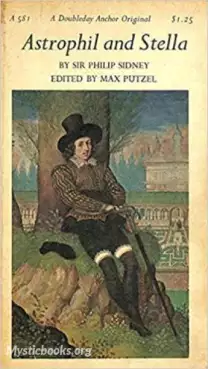
Timeline
Title
Country/Nationality
Sir Philip Sidney
Sir Philip Sidney was an English poet, courtier, scholar and soldier who is remembered as one of the most prominent figures of the Elizabethan age. His works include Astrophel and Stella, The Defence of Poesy (also known as The Defence of Poetry or An Apology for Poetry) and The Countess of Pembroke's Arcadia.
Born at Penshurst Place, Kent, of an aristocratic family, he was educated at Shrewsbury School and Christ Church, Oxford. He was the eldest son of Sir Henry Sidney and Lady Mary Dudley. His mother was the eldest daughter of John Dudley, 1st Duke of Northumberland, and the sister of Robert Dudley, 1st Earl of Leicester. His younger brother, Robert Sidney was a statesman and patron of the arts, and was created Earl of Leicester in 1618. His younger sister, Mary, married Henry Herbert, 2nd Earl of Pembroke and was a writer, translator and literary patron. Sidney dedicated his longest work, the Arcadia, to her. After her brother's death, Mary reworked the Arcadia, which became known as The Countess of Pembroke's Arcadia.
In 1572, at the age of 18, he was elected to Parliament as a Member of Parliament for Shrewsbury and in the same year travelled to France as part of the embassy to negotiate a marriage between Elizabeth I and the Duc D'Alençon. He spent the next several years in mainland Europe, moving through Germany, Italy, Poland, the Kingdom of Hungary and Austria. On these travels, he met a number of prominent European intellectuals and politicians.
Returning to England in 1575, Sidney met Penelope Devereux (who would later marry Robert Rich, 1st Earl of Warwick). Although much younger, she would inspire his famous sonnet sequence of the 1580s, Astrophel and Stella. Her father, Walter Devereux, 1st Earl of Essex, was said to have planned to marry his daughter to Sidney, but he died in 1576 and this did not occur. In England, Sidney occupied himself with politics and art. He defended his father's administration of Ireland in a lengthy document.
More seriously, he quarrelled with Edward de Vere, 17th Earl of Oxford, probably because of Sidney's opposition to the French marriage of Elizabeth to the much younger Alençon, which de Vere championed. In the aftermath of this episode, Sidney challenged de Vere to a duel, which Elizabeth forbade. He then wrote a lengthy letter to the Queen detailing the foolishness of the French marriage. Characteristically, Elizabeth bristled at his presumption, and Sidney prudently retired from court.
Books by Sir Philip Sidney

Astrophil and Stella
The name derives from the two Greek words, 'aster' (star) and 'phil' (lover), and the Latin word 'stella' meaning star. Thus Astrophil is the star lover, and Stella is his star. Sidney partly nativized the key features of his Italian model Petrarch,...

Astrophel and Stella
Astrophel and Stella by Sir Philip Sidney is a captivating work of poetry that explores themes of love, passion, and desire. Written in the late 16th century, this collection of sonnets is considered one of the most significant works of the English...

The Defense of Poesy
In the realm of literature's defense, Sir Philip Sidney's words rise like a clarion call. "The Defense of Poesy" encapsulates a vibrant discourse on the profound power of poetry and its enduring impact on the human spirit. With eloquence that ignites...

My True Love
"My True Love" is a collection of sonnets by Sir Philip Sidney, a prominent figure of the English Renaissance. These sonnets explore the themes of love, beauty, and desire, showcasing Sidney's mastery of the sonnet form and his lyrical prowess. Each...

To Sleep
Sir Philip Sidney's "To Sleep" is a short, but powerful, poem reflecting on the allure and mystery of sleep. The poem explores themes of rest, escape from worldly troubles, and the arrival of dreams. It's written in the classic sonnet form, a hallma...

Countess of Pembroke's Arcadia
Sir Philip Sidney's *Arcadia* is a sprawling Renaissance prose romance that transports readers to a world of idealized chivalry and adventure. Set in a fantastical kingdom inspired by ancient Greek mythology, the story follows the intertwined destini...

Double Sestina - Ye Goatherd Gods
The poem "Double Sestina - Ye Goatherd Gods" is a compelling and emotional work that depicts the profound sorrow and heartbreak of two shepherds who are both in love with the same woman. This unnamed woman has left both shepherds, plunging them into...

Psalmes of David (Sidney Psalms)
The Sidney Psalms are a poetic rendering of the Psalms by Sir Philip Sidney and his sister, Mary Sidney Herbert, the Countess of Pembroke. Written in the late 16th century, they are considered a significant contribution to English Renaissance literat...

Cabinet of Gems
A Cabinet of Gems is a collection of excerpts from Sir Philip Sidney's "The Countess of Pembroke's Arcadia," edited by George MacDonald. The excerpts cover a wide range of subjects, including love, friendship, beauty, and nature. MacDonald's goal in...